Portugal, situated in the extreme southwest of Europe, is the go-to destination for vacationers. To a visitor, its beauty unfolds itself gradually, before presenting a vision of complete beauty. Medieval castles, cobblestoned villages, incredible cities and golden beaches – this Southern European has it all!
Whether it’s hiking amid the granite peaks of Parque Nacional da Peneda-Geres, going for walks in the Serra da Estrela or wandering in the historic villages of the Beiras, there is never a dull moment to come by. Portugal is all about fun, about merrymaking and enjoying the charm of every moment. So, with that in mind, here is a list of the 23 incredible things to do in Portugal.
Algarve – beaches, surfing and more!

Algarve coast, in Southern Portugal, is dotted with some of Europe’s finest beaches. Blessed by the Mediterranean climate and the pristine waters of the Atlantic, they offer the perfect combination. A visitor can choose from 150 beaches found all across Algarve. A visit to these beaches should find a mention in your list of things to do in Portugal.
Some of the best beaches found here are Praia da Marinha, Praia da Falesia, Praia de Odeceixe, and Ilha de Tavira, among others. These beaches offer visitors a range of activities to choose from, ranging from surfing, photography, diving and lounging.
Monsaraz – travel back in time!
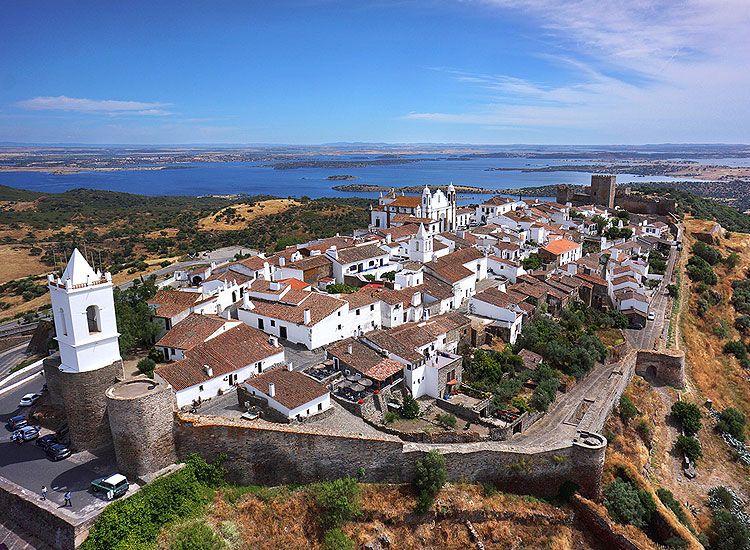
Visit Monsaraz, the beautiful town which has left the madness of modern times behind, and is still soaked in its old medieval charms. The first sight that welcomes a visitor to this serene town is the whitewash and schist of its houses and buildings. Come July, and Monsaraz resembles an open-air museum, exhibiting handicrafts, regional cuisines and several cultural events.
Visit the medieval castle, the parish church of Santa Maria and the former court buildings, or head to the village of Sao Pedro do Corval – famed for its pots and locally produced ceramics.
Explore the best of Spain with Portugal with this package.
Aveiro – Venice of Portugal!
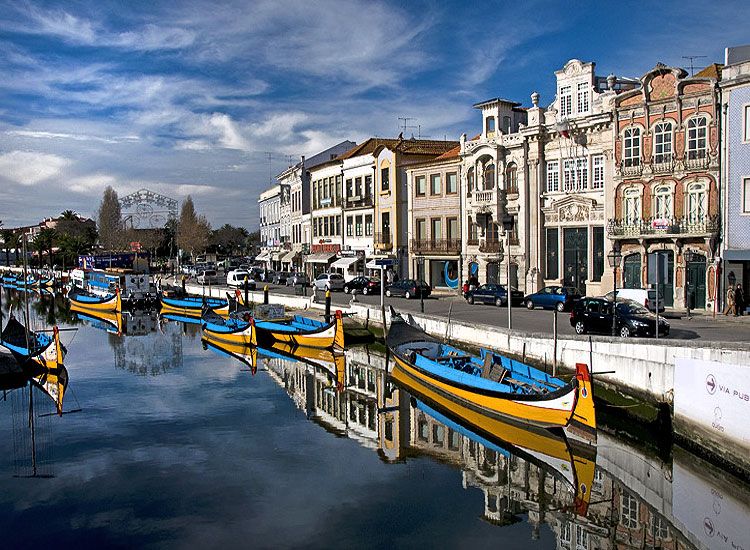
The city of Aveiro is intersected by canals and streets of water on whose surfaces the brightly colored boats, known as “barcos moliceiros,” drift smoothly. These lagoon boats, which were once used to transport kelp, now serve as cruise boats exclusively. Boat trips extending up to 45 minutes are available from the Canal Central.
The trip, passing down the main canal, crosses the local saltpans before coming back to town, but not before acquainting you with various aspects of the region.
Evora – the museum-city!
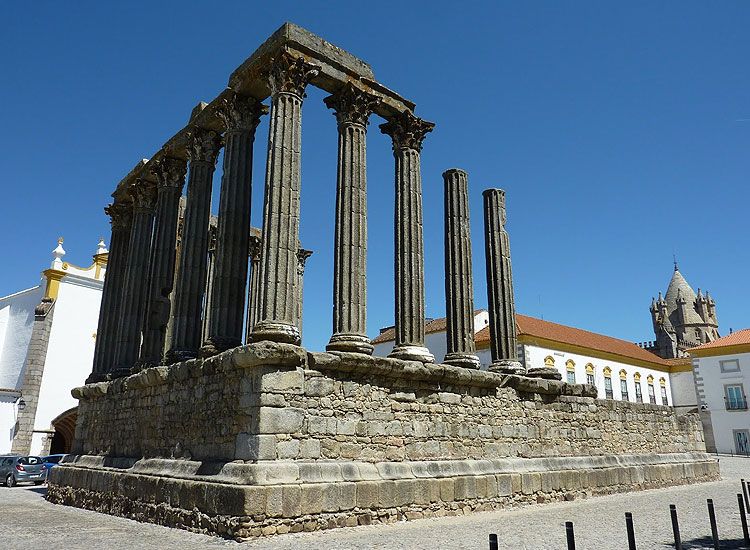
Declared a UNESCO World Heritage Site, Evora stretches itself gently over a sloping hill rising out of the Alentejo plain. The narrow streets of the city reflect its ancient Moorish origins. Traces of Roman culture (Evora was captured in 59 BC by the Romans) are visible in the ruins of a fine temple, the wall and gateway called Dona Isabel and the remains of thermal baths.
Some other monuments which deserve your time and respect are – 5000 BC Megaliths, Temple of Diana, Evora Se Cathedral and Church of Our Lady of Grace.
Obidos – its white and blue!
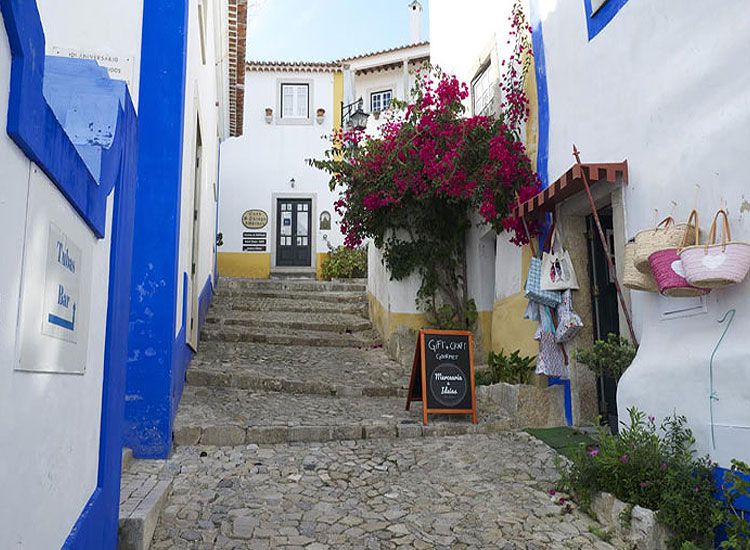
It would be a pleasure to get lost in the walled interiors of Obidos – a medieval town painted in white and blue. This place is one of the prime tourist attractions in Portugal. Here, blossoms of various flowers stand shyly on the sides of smooth stone-caved streets. Once here, let your lips feel the soothing taste of the local cherry liquor called “ginjinha.”
Pay a visit to the well preserved castle within the city’s walls. Witness some perfect examples of religious and civil architecture in the form of Manueline porticoes, the colorful window boxes and the small square.
Douro Valley – where wine flows like water!
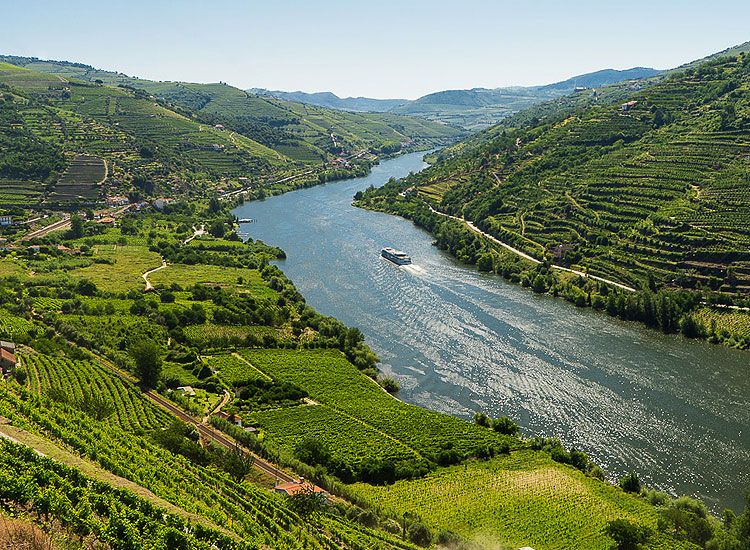
Listed as a World heritage Site, Duoro Valley captivates visitors with its enchanting landscapes, wine villages and museums. Visit the lodges of Vila Nova de Gaia where Port Wine is aged. To know the different aspects of wine growing, go to Douro Museum at Peso da Regua. Let the surreal beauty of Lamego leave you enchanted.
To get lost in wine world, head to Douro Wine Region Valley – the oldest wine region in the world, and then proceed to the wine growing villages of Barcos, Favaios, Provesende, Ucanha, Salzedas and Trevoes. The International Douro Natural Park and Vale do Coa Archaeological Park – an open-air rock art gallery classified as a World Heritage Site, are other places worth visiting.
Universidade de Coimbra – excellence unparalleled!

Universidade de Coimbra, founded in 1920, is the oldest university in Europe, and is classified as a world Heritage Site by UNESCO. Founded in 1920 by Dom Dinis, this splendid university overlooks the rest of the city, besides providing magnificent views of the River Mondego. Porta Ferrea (Iron Gate) – an impressive Mannerist work, greets visitors at the entrance to the building.
You should visit the Via Latina, a Mannerist colonnade built in the 18th century, the Sala Grande dos Actos (the Ceremonial Hall) and the famous tower. Built in 1728, it’s visible from all parts of the city and is its most prominent landmark. Some of the other landmarks worth visiting are the Sala dos Exames Privados (Private Examination Hall), the Capela de Sao Miguel (St. Michael´s Chapel), the Museu de Arte Sacra (Museum of Sacred Art) and the extremely valuable library, the Biblioteca Joanina.
Plan your trip to Europe with our customized holiday packages.
Batalha – the monastic town!
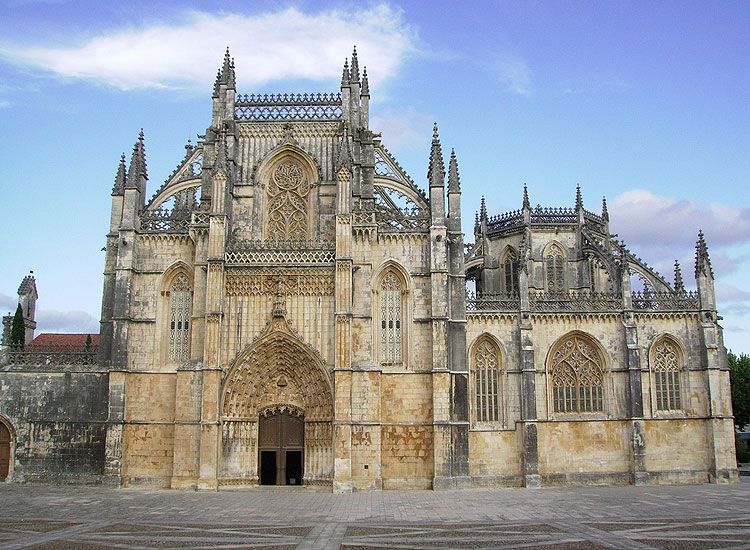
There are many magnificent places to visit in Portugal, and Batalha is one of them. This peaceful town was built alongside the Monastery of Santa Maria de Vitoria. This monastery was built as a fulfillment of a vow by Portuguese King Dom Joao I to the Virgin Mary, marking the victory of Portugal over Castile at the Battle of Aljubarrota on 14th August 1385.
Another place worth visiting is the Monastery of Batalha – a masterpiece Portuguese Gothic. It exhibits the influence of differing styles of architecture, primarily due to its lengthy period of construction, which lasted several reigns. In the interiors, one can admire the Founders’ Chapel with its fine stained-glass windows, the Unfinished Chapels with their Manueline and Flemish Gothic features, along with the Chapter House.
Mondego River – lets go kayaking!
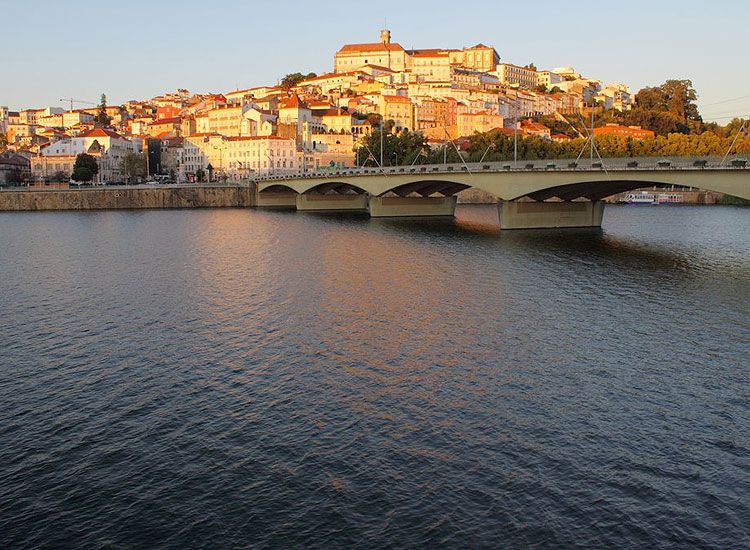
Mondego River is an amazing river which gives you the opportunity of going kayaking the year round. The river possesses a friendly current, with a few rapids making its appearance occasionally. The kayaking route takes you past pine and eucalyptus lined valleys – where black kites fish in summer and grapes vines droop over the river in autumn.
This is also one of Portugal’s most famous descents. Originating just downstream of Penacova, the descent comes to a halt on a river beach near Coimbra. The great thing about all of this is that regardless of whether one is an amateur or a novice, everybody can enjoy themselves!
Alfama – old world charm!
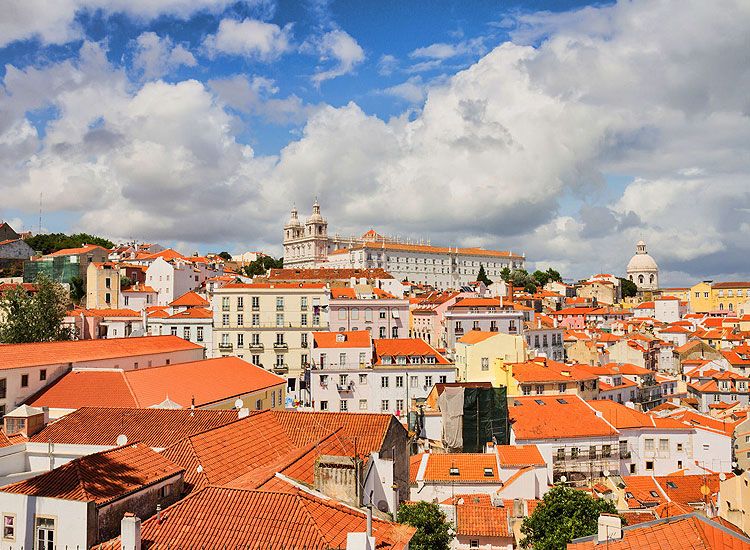
Alfama – the oldest district of Portugal, is a wonderful maze of narrow cobblestoned streets which still retains the old world charm. Stretched across the slope between the Castle of Lisbon and the Tejo River, this place holds a distinct village-like atmosphere. Discover the various aspects associated with Alfama through its Lisbon cathedral, the Museum of Decorative Arts and the several observation points scattered throughout the city.
Listen to traditional Fado music, take a ride on number 28 tram, visit the National Pantheon – the final resting place of Vasco da Gama, Henry the Navigator, etc., and do much more on your next visit to Alfama.
Sintra – culture extraordinaire!
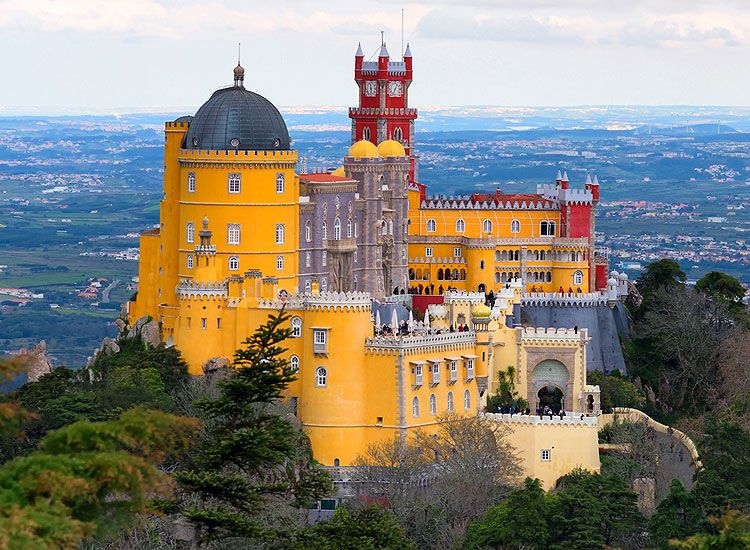
Classified as a World Heritage Site by UNSECO, Sintra is the perfect embodiment of a cultural landscape. Several poets and writers have showered lavish promises on it, including Lord Byron, who called it glorious Eden.” A visitor must visit the fabulous palaces here, like the Palace of Seteais, Pena Palace and Palace of Monserrate – each more outstanding than the other.
Have a sweet tooth? Then head to its confectionaries, where travesseiros (puff pastry stuffed with a sweet egg mixture) and cheese-cakes await you! Spend some times on its lovely beaches, some of which are das Maças, Praia Grande, Praia da Adraga, or visit the picturesque village of Azenhas do Mar, inset in a cliff.
Also read about 15 must visit cities in Europe.
Parque Nacional da Peneda-Geres – zoo adventures!
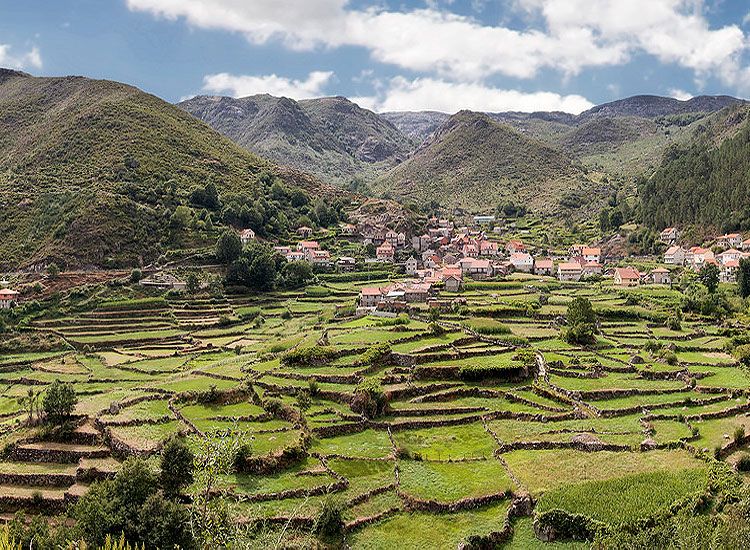
Situated in the extreme northeast of Portugal, the Serra da Peneda and Serra do Geres together constitute a classified national park. The exuberant vegetation here comprises of holly bush wood, besides being home to species like Geres lily. This rugged landscape is also crisscrossed by rapidly flowing streams and rivers, including many waterfalls.
On a lucky day, you might just spot a roe deer, the Iberian wolf and garrano ponies, Barrosa cattle and dark haired Castro Laboreiro dogs. Some of the other activities to engage in include canoeing, walking on the well-preserved Roman road, or “geira,” and absorbing the beautiful scenery.
Pasteis de belem – nothing like Belem pastry!

Among the many things to do in Portugal, one should be tasting the legendary Belem pastry. Got a sweet tooth amid your travels in Portugal? Well, then head to Pasteis De Belem. This large airy bakery cafe has earned its popularity for the incredible Portuguese baked goods, including tarts and breads. The recipe for Belem pastries is one of the best guarded secrets in Portuguese astronomy.
The cakes baked here come with their traditional touch. Made from puff pastry, the cakes here are filled with milk, cream, vanilla, and a liberal sprinkling of cinnamon and sugar.
Palacio Nacional e Convento de Mafra – opulence galore!
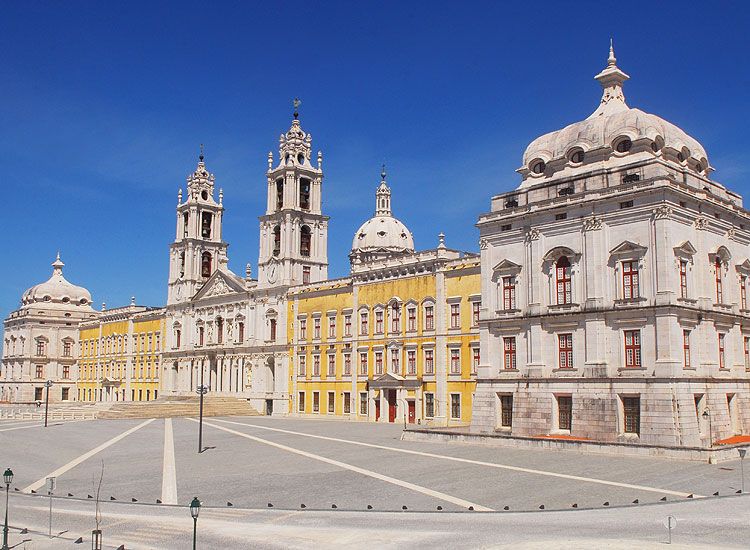
Palacio Nacional e Convento de Mafra radiates a magnificence that leaves an onlooker overawed. The architectural design of the palace, convent and basilica of Mafra bear testimony to the opulence prevailing at the court of King Joao V. This symbol of splendor is the defining landmark of the Portuguese Baroque era.
As a tourist, you should visit the Rocaille Library. Spread across an 83m main room, it contains some 40,000 volumes from the 18th and 19th century, which were organized by the “The Monks from the Convent of Arrabida.” The paintings here are a veritable art treasure in themselves. Other than works by Portuguese, Italian and French artists, mural paintings by renowned Portuguese artists including Cirilo Volkmar Machado and Domingos Sequeira, are the center of attraction here.
Guimaraes – birthplace of Portugal!
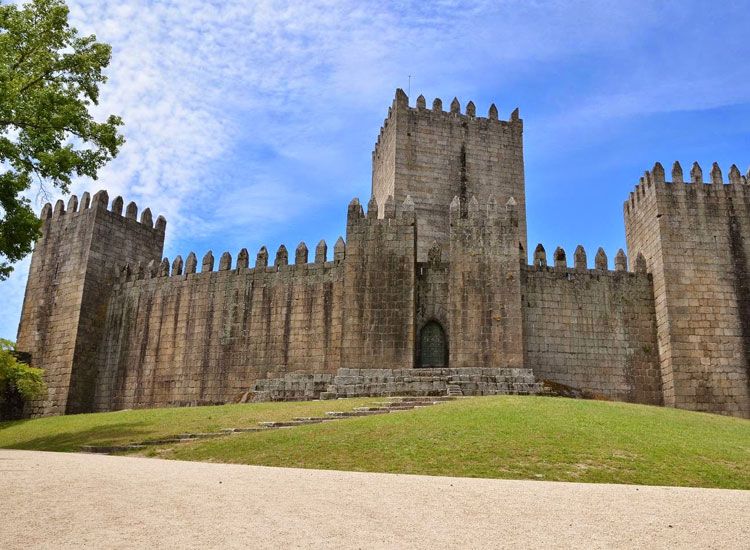
Guimaraes is one of the prime tourist attractions of Portugal. The birth of Afonso Henriques – the first king of Portugal, led to its being referred to as the “birthplace of Portugal.” Added to the list of World Heritage Site by UNESCO on 13th December 2001, this city is strewn with historical memories and public places possessing heritage value. One should visit the Colina Sagrada (Sacred Hill), crowned by Guimaraes Castle, besides the small Romanesque church of Sao Miguel.
To get some spectacular views of the city, head to the top of Monte da Penha. On the way, make a stop at Pousada de Santa Marinha da Costa – an old convent founded by D. Mafalda de Saboia. For an overdose of art and culture, go to Vila Flor Palace and Cultural Centre, Jose de Guimaraes International Arts Centre, and the neo-Romanesque Martins Sarmento Archaeological Museum.
Read About 10 Stunning European Villages and Hamlets.
Dolphin-watching in the Sado estuary – wow, there’s dolphins!
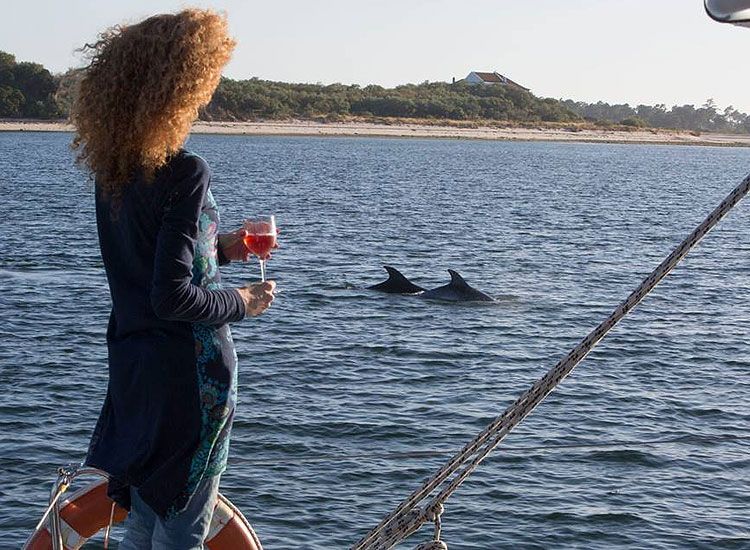
People flock to the Sado estuary to catch a glimpse of the dolphins gliding through the bright blue waters of River Sado. Sado estuary has also been declared a Nature Reserve and a special protection zone. The colony of dolphins found here are known locally as “roazes-corvineiros” (gnawers of corvine fishing nets), called so because they gnaw at fishing nets and mainly eat corniva sea fish.
One can also go on a boat trip and watch these playful mammals perform their antics closely.
Lisbon clubbing – lets go clubbing!

Lisbon is home to some of the most happening nightclubs in Portugal. One of them is Lux Fragil – Lisbon’s best club. Its programs include live bands, Sunday afternoon event, international DJ’s and of course, Lisbon-large measures. Then there’s MusicBox, with its regular program of rock bands, electronic live acts, etc., and an underground feel to all of it.
There are other clubs to head to, like Incognito – an established alternative dance bar, K Urban Beach, Mesa de Frades – which serves prettified Portuguese food and Op Art – Ji – the ultimate venue for electronic music fans.
Rota Vicentina – walking with nature!
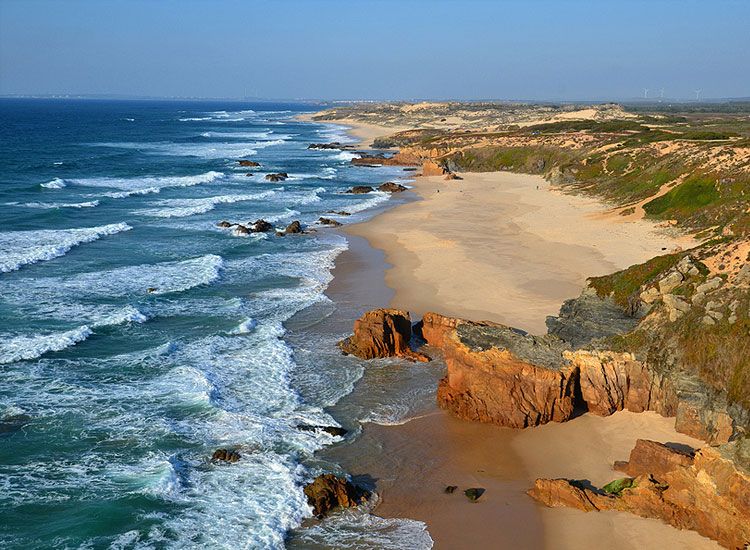
Walking along the Rota Vicentina, which lies along the west coast, reveals the different colors of Nature. This beautiful hiking path covers a distance of almost 340km, and with the variety of landscapes it brings forth, is a visual treat for the eyes. One can take the “historical way,” which goes from Santiago do Cacem to the Cape of Sao Vicente, and consists of forest tracks, towns and villages.
The other way is the “fisherman’s trail,” which lies along the coast for 111km, between Porto Covo and Odeceixe. This path takes you to several beaches and fishing grounds. Along the way, one can taste the amazing dishes of Alentejo and Algarve, go surfing in the waters of the Atlantic and have unlimited fun with so many activities at your disposal.
Convento das Servas de Cristo – in God’s company!
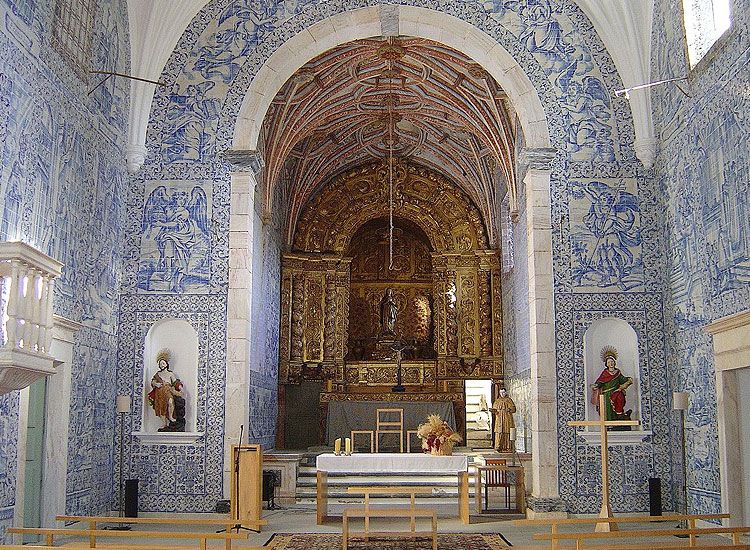
The Convent of the Servants of Christ, built during the 17th century, reflects a fine example of typical Portuguese architecture, or “plain architecture.” The interiors of this church are covered with 17th century patterned azulejo panels, while fresco paintings adorn its arched ceilings.
The high altar, situated at a much higher level than the church, displays an interesting Mannerist altarpiece. Here, the wood carvings exist in brilliant harmony with the paintings. Another sight of attraction here are the various columns that mysteriously end as human figures.
Surfing – Wind, waves and surf!

The Portuguese coast, stretching for more than 850km, is a haven for surfers. From the giant waves of Praia do Norte, in Nazare, to the moderately relaxed waves of Carcavelos, Ericeira and Peniche – surfers never had it so good!
It’s not just water surfing. Portugal, and specifically Guincho, is also the mecca for windsurfers. The friendly winds that blow here provide the best conditions for water surfing. While kitesurfing is a major sport in the beaches of Carcavelos, Costa da Caparica, paddle surfing is also popular in various destinations.
Serra da Estrela– in the lap of the mountains!
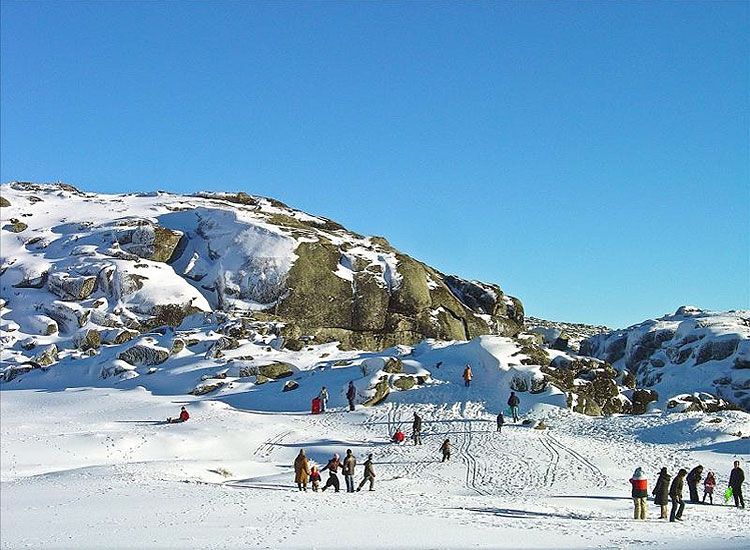
Serra da Estrela, seated at a height of 1,993m, resembles a massive portrayed brushed with the finest strokes of Nature. Visiting this mountain features high in the list of things to do in Portugal. One can follow the course of major rivers from their sources, like Mondego at Mondeguinho, the Zezere at Covao de Ametade and the Alva at the Rossim Valley. The mesmeric beauty of the glacier valleys at Loriga, Manteigas or Covao do Urso and Covao Grande, will leave you stunned.
This place also offers perfect opportunities for skiing, trekking, horse-riding and mountain biking. Of course, to soar like a bird, try para-gliding at Linhares da Beira – a beautiful historic village.
Porto’s riverfront – by the Duoro River!
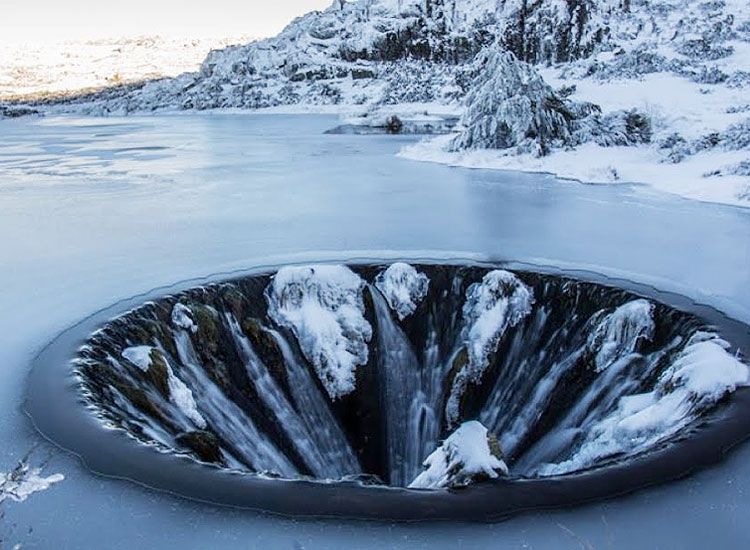
The historic center of Porto, sitting next to the mouth of the Douro River, was declared a UNSECO World Heritage Site in 1996. To discover the spirit of the city, stroll through its streets and admire the typical granite houses and monuments lined along it, take a tram ride and enjoy a boat ride under the city’s six bridges.
The city’s architecture presents a peculiar mix of traditional with the modern. This eminent commercial hub, at the center of the Douro River, is also a flourishing center of the Port wine industry.
Cabo de Sao Vicente – end of the world!

Cabo de Sao Vicente (The Cape of Saint Vincent) marks the southwestern extremity of Europe. It wasn’t long ago that this storm-battered headland was also considered the “end of the world.” This place also contains one of Europe’s brightest lighthouses, which can be seen from 60 miles away.
However, it’s the wild and rugged landscape here that attracts tourists in large numbers. While ferocious winds threat to sweep you off your feet, the jagged cliffs jutting abruptly from the ferocious seas lend it an almost biblical aura.

Thanks, it’s very informative